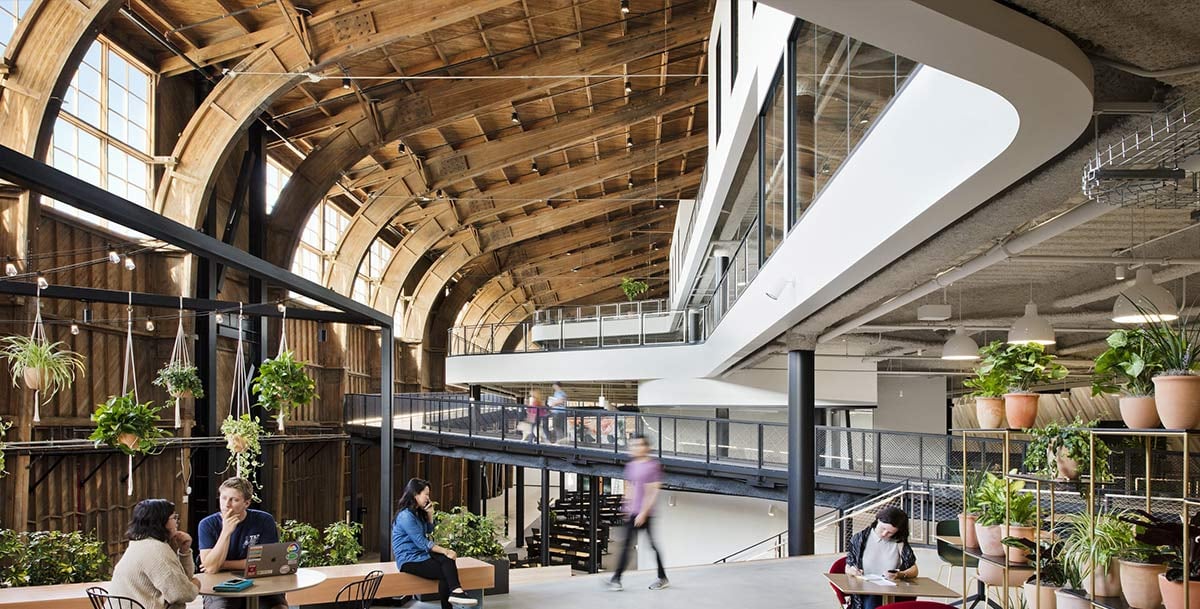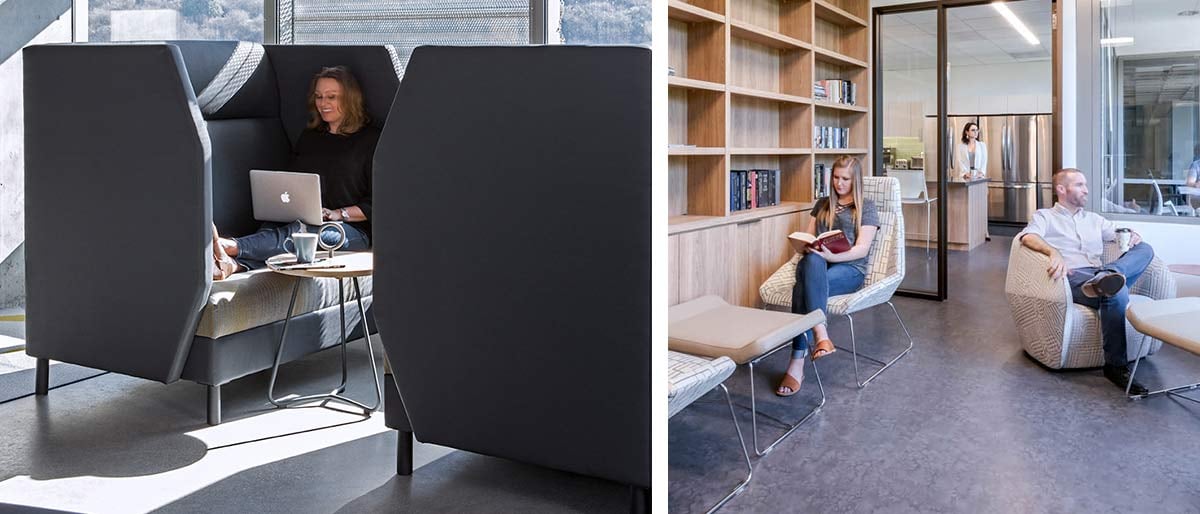So, you’ve decided to upgrade your office and swap out the dated desks and wobbly chairs with bright white workstations and sleek ergonomic office chairs. Before you finalize your furniture budget, take a step back and look at the office holistically. A well-designed office goes beyond workstation configurations and office layouts. It entails how employees interact with the space throughout the day and how they respond to lighting, acoustics, and overall environment. To design a high-performing effective office, consider these not so hidden aspects of workplace design:

Google Spruce Goose Los Angeles workspace case study
Lighting:
Research shows that access to natural lighting helps people be more productive and healthier. If budget allows, enlarge windows and add skylights to pull in light. Supplement daylighting with dimmable LED overhead lights. With their bright white color temperature, they can simulate a naturally lit environment and provide uplifting energy. To create different atmospheres, add ambient lighting to select areas such as lounges and meeting rooms.
Related Download: Optimize Your Office Space (free ebook)

Surround privacy seating and Productname acoustical baffling panels from Platform
Acoustics:
Voices carry. And we’re not talking about the 80’s music hit. We’re talking about unwanted office noise. Overhearing your coworkers’ conversations is one of the leading office complaints. To counteract this lack of speech privacy, pay attention to your ceilings. If your space is cavernous with high ceilings, install acoustic tiles to reduce the amount of echo and reverb. They come in attractive finishes to meet a variety of design aesthetics. Maybe you’re working out of a converted tilt-up with concrete walls and exposed ceilings. To help control noise, consider sound baffles or floating ceiling solutions to reduce airborne sound levels.
Flooring:
Flooring works in concert with the ceiling to absorb sound; however, it can also prevent fatigue of employees as they walk. For large office spaces with high foot-traffic, sourcing a cushioned floor might be the best design option. When selecting flooring materials, weigh durability with costs and aesthetic versatility. Flooring not only provides an aesthetic value, it also adds comfort to an office.
Related Article: Making the Open Office Work Better

Activity-based work settings:
Before settling on an office layout, understand how your employees work and map out accordingly. With many of us working off mobile devices and laptops, designing lounge areas and touch down stations may be more effective than assigned workstations. If your team expands and contracts based on the project, roll out a design with tables on castors and moveable or modular wall systems so you can easily reconfigure the space to meet the team’s demands.
In sum, take a human-centered approach to workplace design and give importance to non-visual design elements. Creating a strong foundation will create a lasting environment.
Contact us for more information about how we can help maximize your office design investment.






